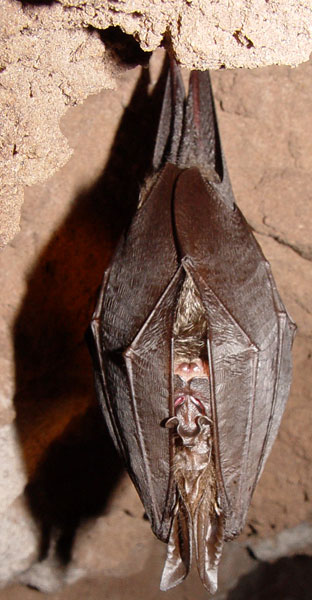Rhinolophus formosae
Formosan Woolly Horseshoe Bat
Morphological description Life history Distribution Habitat Roost sites and roosting patterns Emergence and flight pattern Foraging behaviour Echolocation calls Status and protection
Photo by Shiang- Fan Chen
Morphological Description
·Fur silky and glossy. Bare parts blackish. Similar to R. luctus but smaller.
· Forearm length 56-61 mm (Smith & Xie 2008).
· Ear length is 28-33 mm (Smith & Xie 2008).
·Length of 2nd phalanx of 3rd digit < 1.5x that of first phalanx; 3rd, 4th and 5th metacarpals increase gradually in length.
·Posterior part of noseleaf tapered into lancet, intermediate part with circular central lappets at base of sella; connecting process low; anterior part horseshoe-shaped with deep notch in lower margin (Smith & Xie 2008).
Life history
· Little known
Distribution
· Taiwan endemic. Found in taipei, Hsinchu, Taichung, Hualin, Taitung, Pingtung and Nantou counties (Lin & Cheng 2004).
Habitat
· Not known.
Roost sites and roosting behaviour
· Caves at low-middle altitudes, also found in buildings and tunnels (Lin & Cheng 2004).
Emergence and flight pattern
· Most rhinolophid bats have wing shapes that make them adept at foraging in cluttered environments.
Foraging behaviour
· Nothing known.
Echolocation calls
· Not known.
Status and protection
· Rare in Taiwan. IUCN Near Threatened, decreasing (2008).
